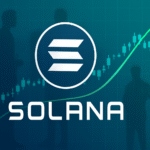
Tether, the world’s largest stablecoin issuer, said Friday it will discontinue support for its USDT token on five legacy blockchains as part of a strategic review aimed at optimizing its infrastructure.
The company announced it will cease redemptions and freeze remaining tokens on Omni Layer, Bitcoin Cash SLP, Kusama, EOS and Algorand networks effective Sept. 1, 2025.
The move follows a comprehensive review of blockchain usage data and market demand, according to Tether. The company said USDT volume on these networks has declined significantly over the past two years.
“Sunsetting support for these legacy chains allows us to focus on platforms that offer greater scalability, developer activity and community engagement,” said Paolo Ardoino, Tether’s chief executive officer.
Tether is pivoting toward Layer 2 networks, including the Lightning Network, and other emerging blockchains that offer improved interoperability and speed. The company said it wants to reallocate resources from underutilized blockchains to better serve its global user base.
USDT holders on the affected networks have until Sept. 1 to redeem their holdings or migrate to supported blockchains. Tether customers can request token issuance on supported networks, while non-customers may need to use third-party service providers for migration.
The announcement gives users approximately seven weeks to transition their holdings before the deadline.
Tether’s USDT is the world’s largest stablecoin by market capitalization, with tokens designed to maintain a $1 value. The company has been expanding support for various blockchain networks since its launch, but is now consolidating its infrastructure around more active platforms.
The affected networks played a foundational role in Tether’s early growth but have seen reduced usage as newer, more efficient blockchains have gained prominence in the digital asset ecosystem.
Tether said it continues to explore collaborations with innovative blockchain ecosystems to broaden USDT accessibility and utility, particularly on scalable Layer 2 networks and DeFi-focused chains with robust user activity and developer engagement.











 Join our Telegram Channel
Join our Telegram Channel